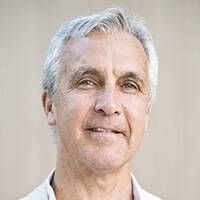How to Make Longer Working Lives Work
It will take smart policies that help employers, employees and entrepreneurs
(This article is the 12th in a weekly Next Avenue series, The Future of Aging: Realizing the Potential of Longevity, published by the Milken Institute Center for the Future of Aging. Links to the rest of the series appear at the end of this article.)
Recently, “population aging” has gone from being a fringe issue to becoming a global imperative. Public and private leaders have recognized that, if we get it right, population aging can become the foundation for 21 century fiscal sustainability, economic growth and social progress.
But even as these conversations blossom, we must insist that they reach the right conclusion: Aging isn’t just about old people.
Helping People Work Longer
Population aging is about the entire life course. It’s about Millennials and Gen X’ers as much as boomers.
Some leading institutions get it. The financial sector, as one example, is doing the hard work of rethinking retirement and other norms of 20 century financial planning. But everyone must get on board to help people work longer.

A century’s worth of tradition will need to be reinvented and reframed, particularly around public policies, which continue to be mired in the 20 century entitlement culture that presumes that “old” is nothing more than victimhood and need.
It could be argued that as business leaders have surged forward and recognized the true scope of aging, many of their public-sector counterparts remain stuck in an earlier time. This won’t do.
Policymakers must catch up to the crest of the aging conversation. We need a national policy framework that ditches retirement. With this framework as the foundation, the public policy initiatives below could support living and working past 60 in the new century. These initiatives recognize that aging is a strategic lens through which policies and practices that can drive prosperity for all must be viewed.
Silver Entrepreneurship Funds
These funds will offer seed money to older adults who want to start new businesses, and they would reward the bank or venture capitalists that fund them. Those 55 and older already have many entrepreneurial advantages, such as subject matter expertise, extensive professional networks and honed industry experience. What they need is the financial catalyst.
Research demonstrates the economic potential of older entrepreneurs. According to the Kauffman Foundation’s annual report on startup activity, those older than 55 account for a quarter of new businesses in the United States. They are also more likely than recent college graduates to start a business. Further, older entrepreneurs represent the largest share of “opportunity startups,” rather than startups driven by economic necessity.
These numbers indicate that older adults are already rising to the challenge of new business ownership. Through silver entrepreneurship funds, we could open a wellspring of innovation and economic vitality, transforming longevity into a national advantage. This would be good business for all, as Kauffman Foundation research also shows impressive success rates for “silver entrepreneurs.”
Tax Policies to Incentivize Employer Older Workers
Relative to years past, more adults need and want to work longer — past traditional retirement age. This shift can be facilitated and encouraged with tax credits for employers.
The payoff for businesses would be substantial.
Older workers possess institutional knowledge and can provide leadership and mentorship to younger employees. Given the antiquated, arbitrary retirement expectations that too often prevail, we lose these valuable skill sets prematurely. A series of tax incentives would send a clear message — underscored by financial incentives — about the value of older workers across industries.
Lifelong Education
Alongside the traditional education model, which more or less stops at age 22, there is a substantial need for lifelong education for the new workforce. Policymakers can offer incentives for in-house training programs that keep older employees contributing to the growth and development of a wide range of businesses.
This is an urgent need in industries where a young workforce is responsible for designing products and services for older consumers. The mismatch is a hindrance to growth.
While numerous sectors could be invoked — entertainment, travel and tourism, consumer goods — the one in greatest need is technology. Older adults could provide insights into the desires of a massive consumer base that holds upward of 70 percent of disposable income.
Without workplace-focused education, older workers are left behind — or deliberately excluded — from technology talent pools. This is a missed opportunity. Moving education in-house and designing it specifically for older adults could bolster an industry struggling to be relevant to 77 million boomers in the U.S. alone.
For those of us who spend our professional lives thinking about population aging, it has been invigorating to push, and watch, as the global conversation evolves to recognize that the future of aging is also about the young. But we’re not there yet.
Policymakers need to craft a framework that recognizes population aging as the cross-generational megatrend that it is. Only then can it become an engine for broad-based growth and wealth creation.
The first article in this series was A New Model for the Future of Aging. The second was Personalized Aging: Extending Lifespans and Healthspans. The third was Boomers: Less Tied to Friends and Family Than Others Are. The fourth was What It Will Take for the U.S. to Profit From the Longevity Dividend. The fifth was Work, Retirement and Financial Security in the 21st Century. The sixth was Technology, Aging and the Coming Fifth Wave. The seventh was 5 Course Corrections Needed for a Better Future of Aging. The eighth was Let’s Make the Most of the Intergenerational Opportunity. The ninth was How We Can Use Our Longer Lives to Do Good. The 10 was Building Cityscapes for Healthy Aging. The 11th was Aging in the 'Right' Place.

